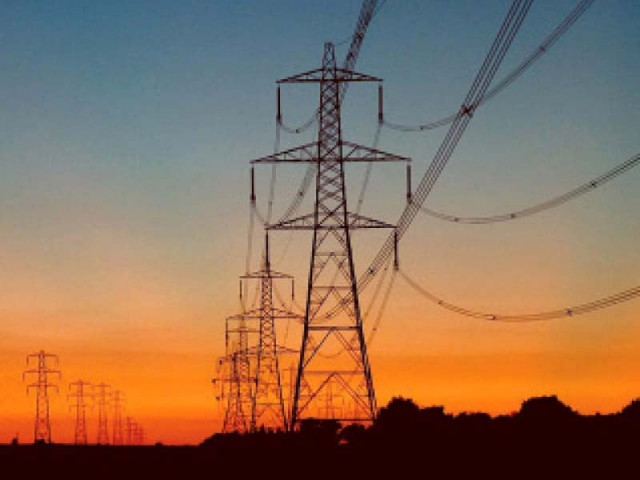What NEPRA can do?
By revising IGCEP and making schedule adjustments for projects, it can play constructive role

There has been some confusion or even controversy over Nepra’s role and responsibilities.
It is a regulator, yes, but what it should be doing. Should it restrict itself to issuing tariffs or should it be doing much more.
There are extreme views on it. One is minimal being restricted to tariff and the other being total sectoral control. One of the past secretaries of Power Division subscribed to this maximalist role.
On the other hand, there is always some kind of tussle or misunderstanding as to the division of responsibilities between the ministry and the regulator. We will discuss in this space as to what Nepra can do and should be doing and what it has not been doing. It is never too late.
First, it is important to take a review of some recent policy announcements of Nepra. Recently, at a seminar, Nepra chairman dilated upon the following: introduction of a wheeling charge and electricity market operations; introduction of take and pay; sending the IGCEP back to NTDC for revision; admission that the tariff awarded by Nepra had been 50-100% higher than international prices.
What he has not said is as to what it plans to do with respect to the theft, T&D losses and receivables.
In a recent article, SAPM Tabish Gauhar has rightly indicated the excessive generation tariff that has been awarded, which has mainly caused circular debt. What has been done in the past, perhaps, can only be partly corrected and even that in a marginal way. It has been achieved by the government through agreements with the IPPs and other steps that are being taken.
The question is what Nepra is planning to do to correct its relevant policies that have resulted in excessive tariff.
It is unfortunate that Nepra has been taking its tariff determination job rather lightly and even irresponsibly. A traditional procedure adopted by it is reliance on investors’ data, perfunctory public hearings and doing marginal adjustments and thus award the tariff.
Neither Nepra staff nor public hearing participants had much idea about the genuine costs. Nepra should be hiring international experts to advise on the issue.
There has been some occasional reliance on so-called experts whose identity has never been made public. In this respect, Nepra’s counterpart Ogra has been doing a better job.
Ogra has been regularly hiring international experts and companies to advise on most complicated issues. We will say more on what Nepra can learn from Ogra, although Ogra itself has problems.
Wheeling rates
On wheeling charges, there are two extreme views prevailing and the matter is sub judice. DISCOs, obviously, with the clearance of the Power Division have gone to courts, challenging Nepra’s unrealistic award in this respect.
There is a need to award a realistic wheeling charge that may be acceptable to all parties. Under current wheeling rates, the likelihood is that all inefficient producers may be able to sell their electricity.
The issue should be settled through consultation and negotiations or the power tribunal should be activated.
“Take and pay” implementation appears to be premature in the absence of a working electricity market. In a regulated environment, the net effect usually comes down to be the same in “take or pay” and “take and pay”.
In regulated cases of take and pay, the capacity factor is reduced to 50-60%, which increases the capacity charge, nullifying any putative advantage. One is not aware what policy has been awarded by Nepra in this respect. Some discussion and consultations is required in this respect.
IGCEP revision
It is good to hear that Nepra has not accepted the IGCEP. There is a dire need for its revision due to low demand and high capacity. A major reform effort is due in the case of IGCEP and PPIB procedures.
IGCEP has remained static and unrevised for decades despite changes in the economy. Even the Energy Security Plan of 2005 remains in operation under which PAEC is sticking to its capacity allotment of 8,000MW and is planning to unload more of its plants in the beleaguered market.
T&D losses have remained high including the receivables. Nepra has adopted a financial tool of restricting the admissible T&D losses at a lower level, purportedly incentivising the reduction in T&D losses. No improvement has happened under this policy. In fact, it has even damaged DISCOs, making them weak financially and unable to make investment required in T&D reduction.
To be fair, Nepra could not have awarded a cart blanche to DISCOs in this respect, and some kind of financial tools had to be used.
But it can do more, as Ogra has done and has been able to control UFG to some extent, at least in the case of one company. Ogra hired international consultants to study the causes and recommendations were developed based on the study.
It is an input and activity-based system. Companies are obliged to implement a programme of activities and on its successful implementation, a UFG allowance is approved by Ogra. Nepra can and should adopt something like this, even if not exactly the same.
Due to commonality of issues, there have been suggestions to merge Nepra and Ogra, as have Power and Petroleum Divisions have been consolidated into one ministry. The jury is still out on the achievements of intended results. Bureaucracy wants to work in silos and calls it independence. Our culture is not ready for mutual consultation and coordination.
In most countries, energy institutions are bundled together both at administrative and regulatory levels. It is good to hear that the government has merged the AEDB and PPIB finally, a longstanding decision indeed.
Electricity exchange
Nepra is upbeat on its march towards electricity market, while simultaneously it continues to award regulated tariffs adding to the problem. Many do not share this optimism and call it Truck ki Batti.
Without an electricity exchange, there is no concept of competition where buyers and sellers quote their prices.
In the form of CTBCM, it is old wine in the new bottle. Cost-based one-sided trade is only changing time duration of the merit order from monthly to daily or hours. There would be transparency issues as well.
Many stakeholders have suggested a third-party evaluation of the system. What use is there of separating electricity trade accounts from infrastructure without market participants and unconstrained electricity.
There is new management at Nepra. It does not have to defend the mistakes and inactions of the past. Mounting circular debt largely due to induction of excessive capacity at excessive tariff is the main issue of the day.
By revising IGCEP and making schedule adjustments of impending projects, it can play a major and constructive role.
Unfortunately, it has been doing the contrary, a recent example of which is approval of Trimmu project. Instead of pursuing popularity and PR, Nepra would be well advised to take unpopular (among the vested interest) decisions and perform its function with neutrality and strength.
The writer is former member energy of the Planning Commission and author of several books on the energy sector
Published in The Express Tribune, May 31st, 2021.
Like Business on Facebook, follow @TribuneBiz on Twitter to stay informed and join in the conversation.



















COMMENTS
Comments are moderated and generally will be posted if they are on-topic and not abusive.
For more information, please see our Comments FAQ